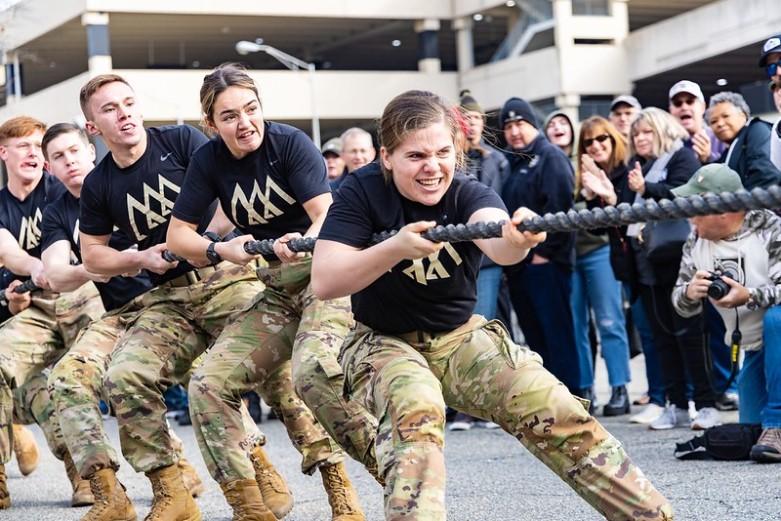As the oldest inter-service rivalry in college football, the Army-Navy game is steeped in tradition and pageantry. From the historic venues to the beloved pre-game rituals, the matchup between the Cadets and Midshipmen is much more than a football game – it’s a celebration of camaraderie and service. In this article, we’ll explore six time-honored traditions that every fan should know before attending this legendary event. So grab your spirit gear and get ready to immerse yourself in the rich history of the Army-Navy game!
Key Traditions of the Army-Navy Game
The Army-Navy Game is steeped in tradition and history, making it one of the most iconic rivalries in college football. Here are six key traditions that every fan should know:
- March On: Before the game, the cadets of West Point and the midshipmen of Annapolis march onto the field in a display of unity and pride that is unmatched in college sports.
- Sing Second: After the game, the losing team’s alma mater is played first, followed by the alma mater of the winning team, a tradition known as “Singing Second.”
- “Beat Army” and ”Beat Navy”: Throughout the year, cadets and midshipmen can be heard chanting “Beat Navy” or “Beat Army” as a way to show their dedication to their respective academies.
- The Prisoner Exchange: Each year, the cadets and midshipmen participate in a symbolic “prisoner exchange,” where students from each academy spend a day at their rival academy.
Army Mule vs. Navy Goat: The two academies have live mascots at the game: the Army Mule for West Point and the Navy Goat for Annapolis, adding a fun and lively element to the rivalry.
| Tradition | Description |
|---|---|
| Tailgate Showdown | Fans from both sides compete in elaborate tailgates, showcasing their school spirit through food, drinks, and decorations. |
| Service Academy Spirit Spot | Each year, the two academies release comedic videos teasing each other before the game, adding to the friendly rivalry. |
Impressive Pregame Ceremonies
During the Army-Navy game, there are several that add to the excitement of this historic rivalry. One of the most iconic traditions is the march-on, where the entire brigade of Midshipmen and Corps of Cadets enter the stadium in formation. This display of discipline and unity sets the stage for the intense competition that is about to unfold.
Another must-see moment is the prisoner exchange, where representatives from both academies symbolically trade prisoners before the game begins. This tradition dates back to the early 20th century and serves as a reminder of the camaraderie and mutual respect shared between these two military institutions. The pageantry and symbolism of these pregame ceremonies make the Army-Navy game truly unique and unforgettable.
Rivalry Trophies and Awards
The Army-Navy Game is not just about football - it’s a longstanding tradition filled with pageantry and rivalry trophies. Here are six traditions associated with the game that every fan should know:
- The March On: Before kickoff, the Corps of Cadets from West Point and the Brigade of Midshipmen from Annapolis march onto the field in formation. This display of military precision and discipline sets the tone for the game.
- The Singing of Alma Maters: At the end of the game, the winning team’s alma mater is played, followed by the alma mater of the losing team. This tradition highlights the respect and camaraderie between the two academies.
- The Commander-in-Chief’s Trophy: Awarded to the service academy with the best football record against the other two, the Commander-in-Chief’s Trophy is a highly coveted prize and symbol of football supremacy among the Army, Navy, and Air Force.
- The Prisoner Exchange: During the game, cadets and midshipmen participate in a time-honored tradition known as the “prisoner exchange.” This signifies the unity and mutual respect between the two academies.
- The Army-Navy Game Ball: The game ball is parachuted onto the field by special forces operators before kickoff, adding an element of excitement and spectacle to the event.
- The Navy Goat and Army Mule: Mascots representing each academy, the Navy Goat and Army Mule lead their respective teams onto the field and serve as symbols of pride and tradition.
The March On and the Drum and Bugle Corps
The March On is a long-standing tradition at the Army-Navy Game, where the cadets and midshipmen march onto the field in formation before the game begins. This impressive display of military precision and discipline never fails to awe the crowd and set the tone for the spirited competition ahead.
The Drum and Bugle Corps is another beloved tradition at the Army-Navy Game, where talented musicians from both academies come together to perform rousing music that adds to the excitement of the event. Their synchronized movements and powerful melodies create an electrifying atmosphere that truly showcases the pride and camaraderie of both schools.
Insights and Conclusions
As you gear up for this year’s Army-Navy Game, make sure to familiarize yourself with these six iconic traditions that make this rivalry match unlike any other. From the pageantry of the march-ons to the emotion of the singing of each school’s alma mater, each tradition adds to the rich history and spirit of the game. So whether you’re a die-hard fan or just tuning in for the first time, understanding these rituals will deepen your appreciation for the longest-standing rivalry in college football. Get ready to witness the pride, honor, and camaraderie that make the Army-Navy Game a truly special event. Let the countdown begin to kickoff and may the best team emerge victorious!


